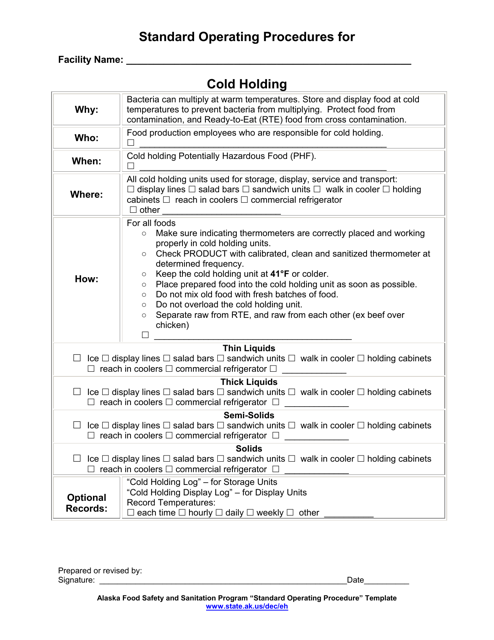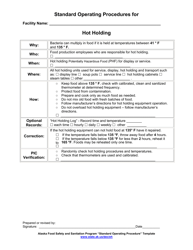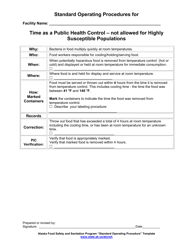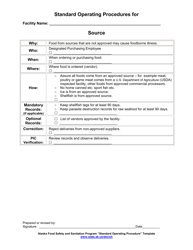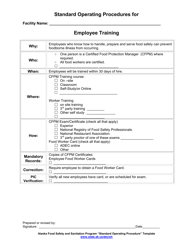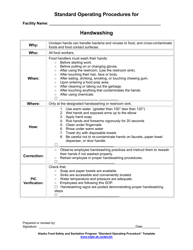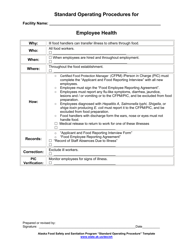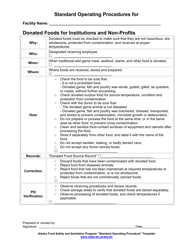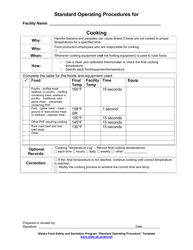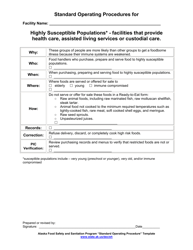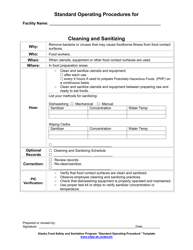Standard Operating Procedures for Cold Holding - Alaska
Standard Operating Procedures for Cold Holding is a legal document that was released by the Alaska Department of Environmental Conservation - a government authority operating within Alaska.
FAQ
Q: What are standard operating procedures for cold holding?
A: Standard operating procedures for cold holding refer to guidelines and practices that ensure perishable food is kept at safe temperatures to prevent spoilage and minimize the risk of foodborne illnesses.
Q: Why is it important to follow standard operating procedures for cold holding?
A: Following standard operating procedures for cold holding is important to ensure food safety and avoid the growth of harmful bacteria that can cause foodborne illnesses.
Q: What is the recommended temperature for cold holding food?
A: The recommended temperature for cold holding food is below 41°F (5°C) to inhibit bacterial growth.
Q: How often should the temperature of cold holding equipment be checked?
A: Temperature of cold holding equipment should be checked at least once every four hours to ensure it is maintaining the proper temperature.
Q: What should be done if the temperature of cold holding equipment is found to be above the recommended range?
A: If the temperature of cold holding equipment is found to be above the recommended range, the equipment should be immediately repaired or adjusted to bring it back within the safe temperature zone.
Q: How long can cold-held food be safely stored?
A: Cold-held food can be safely stored for a maximum of 7 days from the date of preparation.
Q: What should be done with food that has been left out at room temperature for too long?
A: Food that has been left out at room temperature for too long should be discarded to prevent the growth of bacteria that can cause foodborne illnesses.
Form Details:
- The latest edition currently provided by the Alaska Department of Environmental Conservation;
- Ready to use and print;
- Easy to customize;
- Compatible with most PDF-viewing applications;
- Fill out the form in our online filing application.
Download a printable version of the form by clicking the link below or browse more documents and templates provided by the Alaska Department of Environmental Conservation.
